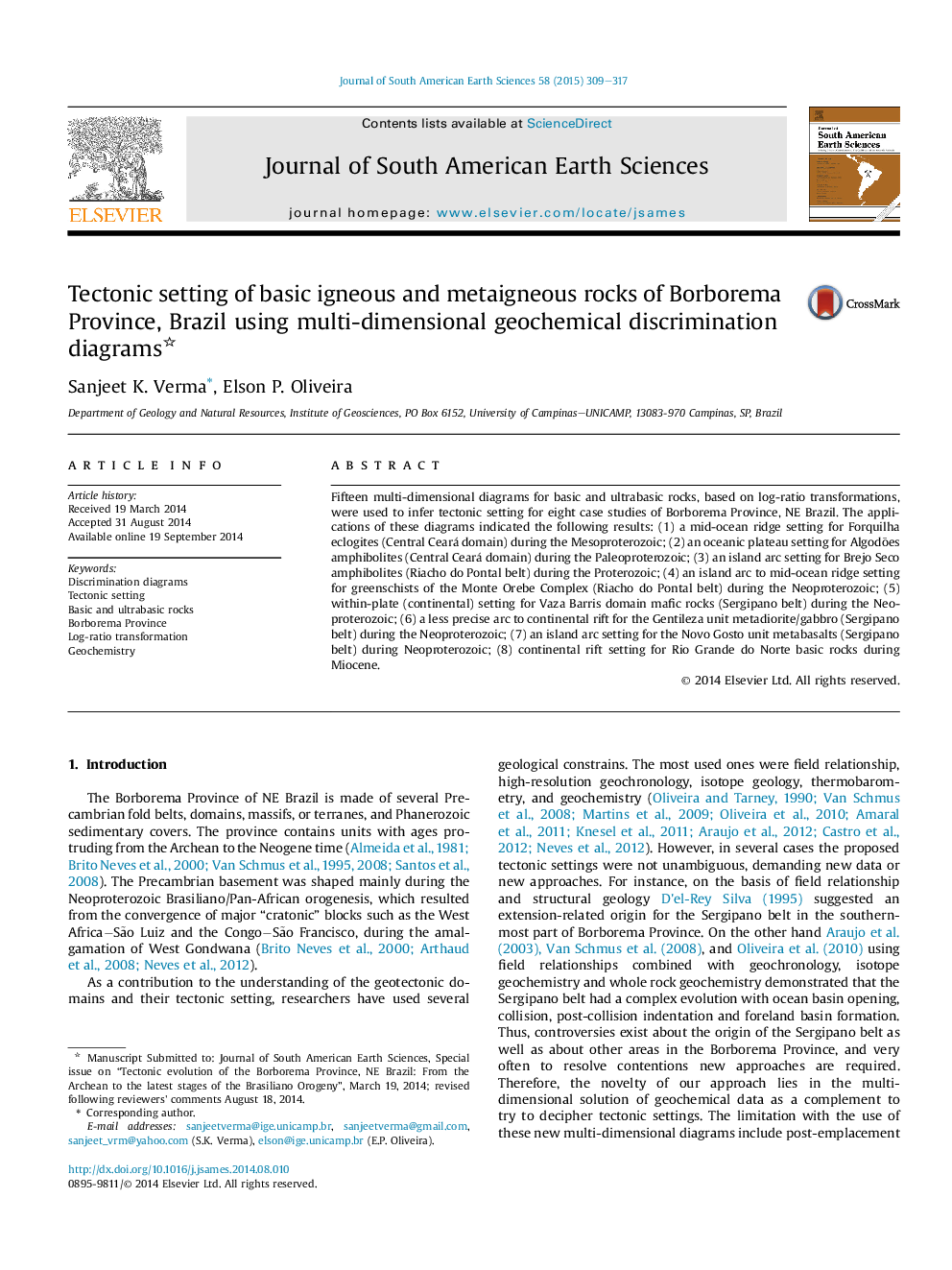| Article ID | Journal | Published Year | Pages | File Type |
|---|---|---|---|---|
| 4682251 | Journal of South American Earth Sciences | 2015 | 9 Pages |
•Multidimensional geochemical diagrams were applied to infer tectonic settings.•The applications were based on major elements and immobile trace elements.•Tectonic settings: island arc, continental rift, ocean-island and mid-ocean ridge.
Fifteen multi-dimensional diagrams for basic and ultrabasic rocks, based on log-ratio transformations, were used to infer tectonic setting for eight case studies of Borborema Province, NE Brazil. The applications of these diagrams indicated the following results: (1) a mid-ocean ridge setting for Forquilha eclogites (Central Ceará domain) during the Mesoproterozoic; (2) an oceanic plateau setting for Algodões amphibolites (Central Ceará domain) during the Paleoproterozoic; (3) an island arc setting for Brejo Seco amphibolites (Riacho do Pontal belt) during the Proterozoic; (4) an island arc to mid-ocean ridge setting for greenschists of the Monte Orebe Complex (Riacho do Pontal belt) during the Neoproterozoic; (5) within-plate (continental) setting for Vaza Barris domain mafic rocks (Sergipano belt) during the Neoproterozoic; (6) a less precise arc to continental rift for the Gentileza unit metadiorite/gabbro (Sergipano belt) during the Neoproterozoic; (7) an island arc setting for the Novo Gosto unit metabasalts (Sergipano belt) during Neoproterozoic; (8) continental rift setting for Rio Grande do Norte basic rocks during Miocene.
